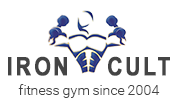Squat Rules Briefed
I believe I left you in the lurch. I should have elaborated on the squat rules that were stated in the previous blog entry. Below is the briefing of the first three squat rules.
1) Half squat produce half results: Yes, full squat where your quadriceps is parallel to the floor or still getting down is a better way to perform the squat. Half squats don’t activate the hamstrings, adductors and glutes. If you perform half squat you may end up developing imbalanced legs—a weaker posterior chain. Posterior chain is a group of muscles consisting predominantly on the posterior of the body. Examples of these muscles include calves, hamstrings, glutes, erector spinae (lower back), trapezius, and posterior deltoid.
Moreover, you may end up contributing to an imbalance in the quadriceps to hamstring strength ratio if you perform only half squat. This imbalance increases the risk of hamstring tears. It also increases the risk of ACL tear.
2) Not Squatting is bad for the knees: This may sound contrary to the general belief, however, not squatting is bad for the knees. Extensive research suggests that squats improve knee stability and thus help reduce the risk of injuries. Also, the time taken to recuperate from injuries is reduced.
3) Heels down, chest up, knees out, butt back: This arguably is the principal squatting rule. The heels are down, for the ascent (lifting up) of the body and the weight mainly occurs from the heels. Thus the heels are down on the floor. Secondly, the lumbar curve is maintained with chest up—proper alignment of the spine. Thirdly, the knees are out, so they neither flare out nor cave in. Lastly, push the butt back and down, keeping the knees upright, as squatting mainly involves the hips than the knees.
To be continued………….
